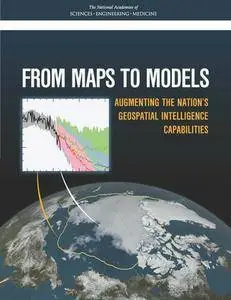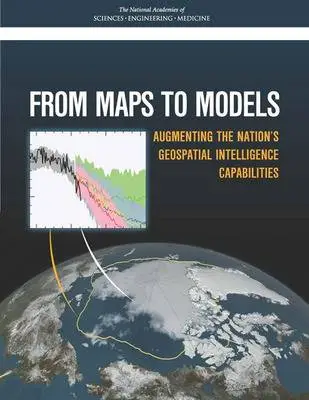From Maps to Models: Augmenting the Nation's Geospatial Intelligence Capabilities
Committee on Models of the World for the National Geospatial-Intelligence Agency; Division on Earth and Life Studies; Board on Mathematical Sciences and Their Applications; Division on Engineering and Physical Sciences; National Academies of Sciences, Engineering, and Medicine
ITexLi | 2016 | ISBN: 030944991X 9780309449915 | 135 pages | PDF | 72 MB
Committee on Models of the World for the National Geospatial-Intelligence Agency; Division on Earth and Life Studies; Board on Mathematical Sciences and Their Applications; Division on Engineering and Physical Sciences; National Academies of Sciences, Engineering, and Medicine
ITexLi | 2016 | ISBN: 030944991X 9780309449915 | 135 pages | PDF | 72 MB
This volume describes the types of models and analytical methods used to understand real-world systems, discusses what would be required to make these models and methods useful for geospatial intelligence. The book provides examples of models that have been used, describes how to go about a model-based investigation, and discusses models and methods that are relevant to NGA’s mission.
The United States faces numerous, varied, and evolving threats to national security, including terrorism, scarcity and disruption of food and water supplies, extreme weather events, and regional conflicts around the world.
Effectively managing these threats requires intelligence that not only assesses what is happening now, but that also anticipates potential future threats.
A model is a simplified representation of a real-world system that is used to extract explainable insights about the system, predict future outcomes, or explore what might happen under plausible what-if scenarios. Such models use data and/or theory to specify inputs (e.g., initial conditions, boundary conditions, and model parameters) to produce an output.
Contents
Preface
Summary
1 Why Models?
2 Illustrative Models
3 Model Foundations
4 Models and Methods Relevant to NGA
References
Appendix A Combining Models
Appendix B Computation
Appendix C Biographical Sketches of Committee Members
Appendix D Acronyms and Abbreviations
1st true PDF with TOC BookMarkLinks



